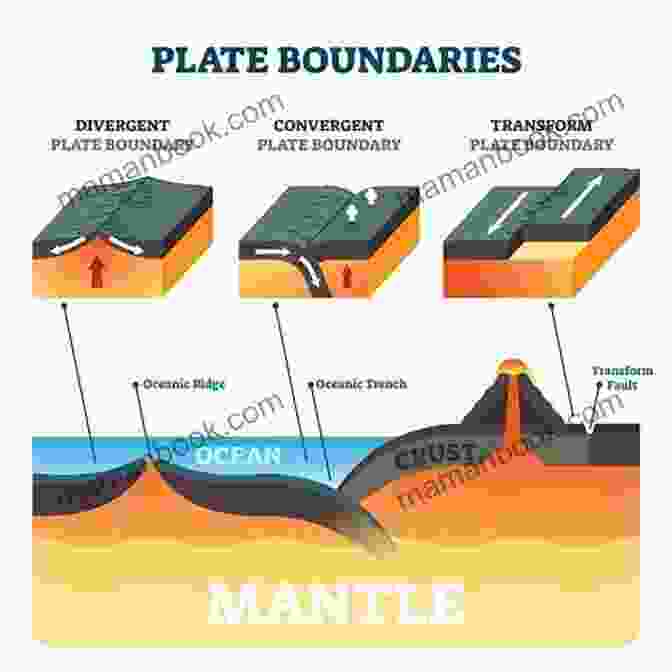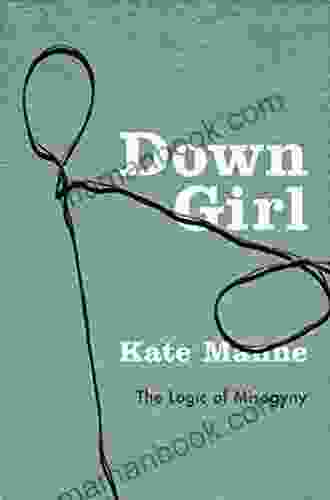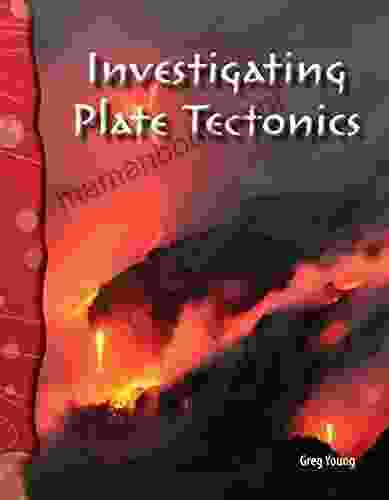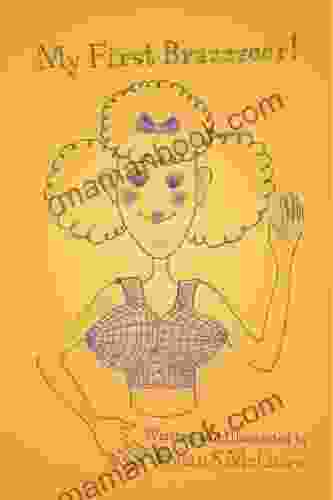Investigating Plate Tectonics: Exploring the Earth's Dynamic Surface

Unveiling the Mysteries of Earth's Ever-Changing Surface
Beneath our feet lies a world of constant motion and transformation. The Earth's surface is not a static entity but rather a dynamic and ever-changing landscape shaped by the enigmatic forces of plate tectonics.
4.4 out of 5
| Language | : | English |
| File size | : | 15727 KB |
| Screen Reader | : | Supported |
| Print length | : | 32 pages |
Plate tectonics is the scientific theory that explains the movement of the Earth's lithosphere, the rigid outermost layer of the planet, over the planet's mantle, a layer of hotter, partially molten rock. The lithosphere is divided into tectonic plates that interact in complex and fascinating ways.
The movement and interactions of tectonic plates are responsible for a myriad of geological phenomena, ranging from the formation of mountains and ocean basins to volcanic eruptions and earthquakes. Understanding plate tectonics is thus crucial for unraveling the mysteries of our planet's dynamic surface.
Continental Drift and the Birth of Plate Tectonics
The concept of continental drift, the idea that continents move over the surface of the Earth, was first proposed by Alfred Wegener in 1912. Wegener's theory was based on observations of matching fossil records and geological formations on different continents, as well as the peculiar fit of the continents along their coastlines.
Although Wegener's theory was initially met with skepticism, it later gained acceptance as evidence from paleomagnetism, the study of Earth's magnetic field over time, corroborated his ideas. Paleomagnetic data revealed that the Earth's magnetic poles have reversed their orientation numerous times over the course of geologic history, and that these reversals are recorded in the magnetic properties of rocks.
The combination of continental drift and paleomagnetism led to the development of the theory of plate tectonics in the 1960s. This theory proposed that the Earth's lithosphere is divided into a series of rigid tectonic plates that move independently and interact at their boundaries.
Tectonic Plates and Their Boundaries
Tectonic plates are massive pieces of the Earth's lithosphere that move over the planet's mantle. They range in size from small plates, such as the Arabian Plate, to large plates, such as the Pacific Plate.
Plate boundaries are the areas where tectonic plates interact. There are three main types of plate boundaries:
- Divergent boundaries occur where two plates move away from each other, creating new oceanic crust at mid-ocean ridges.
- Convergent boundaries occur where two plates move towards each other, resulting in the destruction of oceanic crust at subduction zones.
- Transform boundaries occur where two plates slide horizontally past each other, creating faults and earthquakes.
Geological Phenomena Associated with Plate Tectonics
The interaction of tectonic plates at their boundaries gives rise to a wide range of geological phenomena, including:
- Mountain building occurs when two continental plates collide, resulting in the formation of massive mountain ranges such as the Himalayas.
- Volcanic eruptions occur when magma, molten rock from the Earth's interior, rises to the surface and erupts through volcanoes.
- Earthquakes occur when tectonic plates suddenly slip past each other, releasing energy that generates seismic waves.
Investigating Plate Tectonics Today
Ongoing research in plate tectonics continues to refine our understanding of Earth's dynamic surface. Scientists use a variety of methods to study plate tectonics, including:
- GPS measurements track the movement of tectonic plates over time.
- Seismic tomography creates images of the Earth's interior by analyzing seismic waves.
- Plate reconstruction uses geological and geophysical data to reconstruct the history of plate movements.
Plate tectonics is a fundamental theory in Earth science that explains the movement of tectonic plates and their interactions at plate boundaries. This theory has revolutionized our understanding of the Earth's dynamic surface and has provided insights into the processes that have shaped our planet over billions of years.
Ongoing research in plate tectonics continues to shed light on the intricate workings of our planet's lithosphere and mantle. This research is essential for predicting and mitigating natural hazards, such as earthquakes and volcanic eruptions, and for understanding the long-term evolution of Earth's surface.

4.4 out of 5
| Language | : | English |
| File size | : | 15727 KB |
| Screen Reader | : | Supported |
| Print length | : | 32 pages |
Do you want to contribute by writing guest posts on this blog?
Please contact us and send us a resume of previous articles that you have written.
 Top Book
Top Book Novel
Novel Fiction
Fiction Nonfiction
Nonfiction Literature
Literature Paperback
Paperback Hardcover
Hardcover E-book
E-book Audiobook
Audiobook Bestseller
Bestseller Classic
Classic Mystery
Mystery Thriller
Thriller Romance
Romance Fantasy
Fantasy Science Fiction
Science Fiction Biography
Biography Memoir
Memoir Autobiography
Autobiography Poetry
Poetry Drama
Drama Historical Fiction
Historical Fiction Self-help
Self-help Young Adult
Young Adult Childrens Books
Childrens Books Graphic Novel
Graphic Novel Anthology
Anthology Series
Series Encyclopedia
Encyclopedia Reference
Reference Guidebook
Guidebook Textbook
Textbook Workbook
Workbook Journal
Journal Diary
Diary Manuscript
Manuscript Folio
Folio Pulp Fiction
Pulp Fiction Short Stories
Short Stories Fairy Tales
Fairy Tales Fables
Fables Mythology
Mythology Philosophy
Philosophy Religion
Religion Spirituality
Spirituality Essays
Essays Critique
Critique Commentary
Commentary Glossary
Glossary Bibliography
Bibliography Index
Index Table of Contents
Table of Contents Preface
Preface Introduction
Introduction Foreword
Foreword Afterword
Afterword Appendices
Appendices Annotations
Annotations Footnotes
Footnotes Epilogue
Epilogue Prologue
Prologue James D Shipman
James D Shipman Armand Rosamilia
Armand Rosamilia Jared Wynn
Jared Wynn Ernesto Che Guevara
Ernesto Che Guevara Autumn Summers
Autumn Summers Lizzie Huxley Jones
Lizzie Huxley Jones Rebecca Keele
Rebecca Keele Gary Golio
Gary Golio Lee Child
Lee Child Savannah Kade
Savannah Kade Stephanie True Peters
Stephanie True Peters Stanley Meisler
Stanley Meisler Flora Madison
Flora Madison Maria Baes
Maria Baes Jenna Austin
Jenna Austin Dean King
Dean King Patrick D Hahn
Patrick D Hahn Tony Dunbar
Tony Dunbar Ed Rosenthal
Ed Rosenthal Janet Munsil
Janet Munsil
Light bulbAdvertise smarter! Our strategic ad space ensures maximum exposure. Reserve your spot today!
 Mario SimmonsFollow ·8.8k
Mario SimmonsFollow ·8.8k Griffin MitchellFollow ·7.5k
Griffin MitchellFollow ·7.5k William FaulknerFollow ·12.8k
William FaulknerFollow ·12.8k Grayson BellFollow ·8.8k
Grayson BellFollow ·8.8k Victor TurnerFollow ·16.7k
Victor TurnerFollow ·16.7k Mario BenedettiFollow ·7.8k
Mario BenedettiFollow ·7.8k Harrison BlairFollow ·15.9k
Harrison BlairFollow ·15.9k Jack ButlerFollow ·5.4k
Jack ButlerFollow ·5.4k

 Ernest Powell
Ernest PowellBenefits of Corporal Punishment: A Review of the...
Corporal punishment is a form of physical...

 Bobby Howard
Bobby HowardThe Development and Significance of African American...
African American...

 Guy Powell
Guy PowellDown Girl: The Logic of Misogyny - A Comprehensive...
In her groundbreaking work,...

 Forrest Blair
Forrest BlairThe Bikini Changing Room: A Micro Mini Romance
In the heart of...
4.4 out of 5
| Language | : | English |
| File size | : | 15727 KB |
| Screen Reader | : | Supported |
| Print length | : | 32 pages |
















